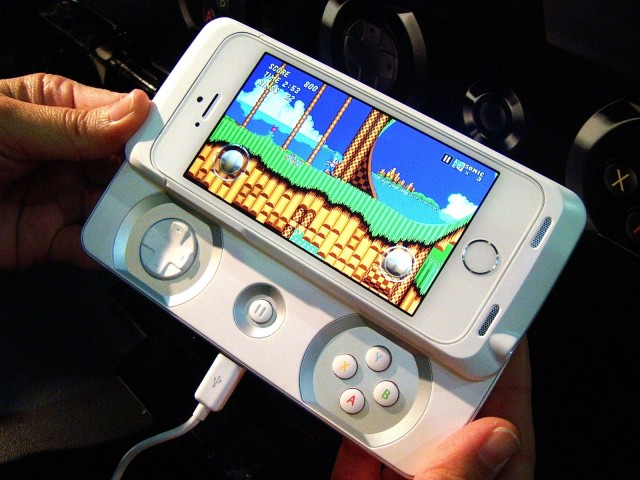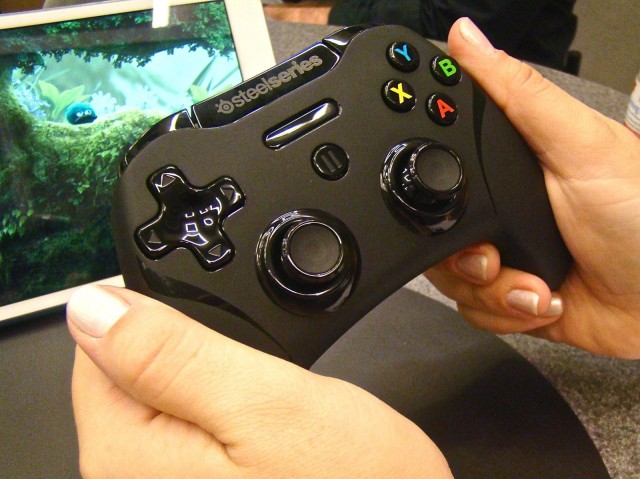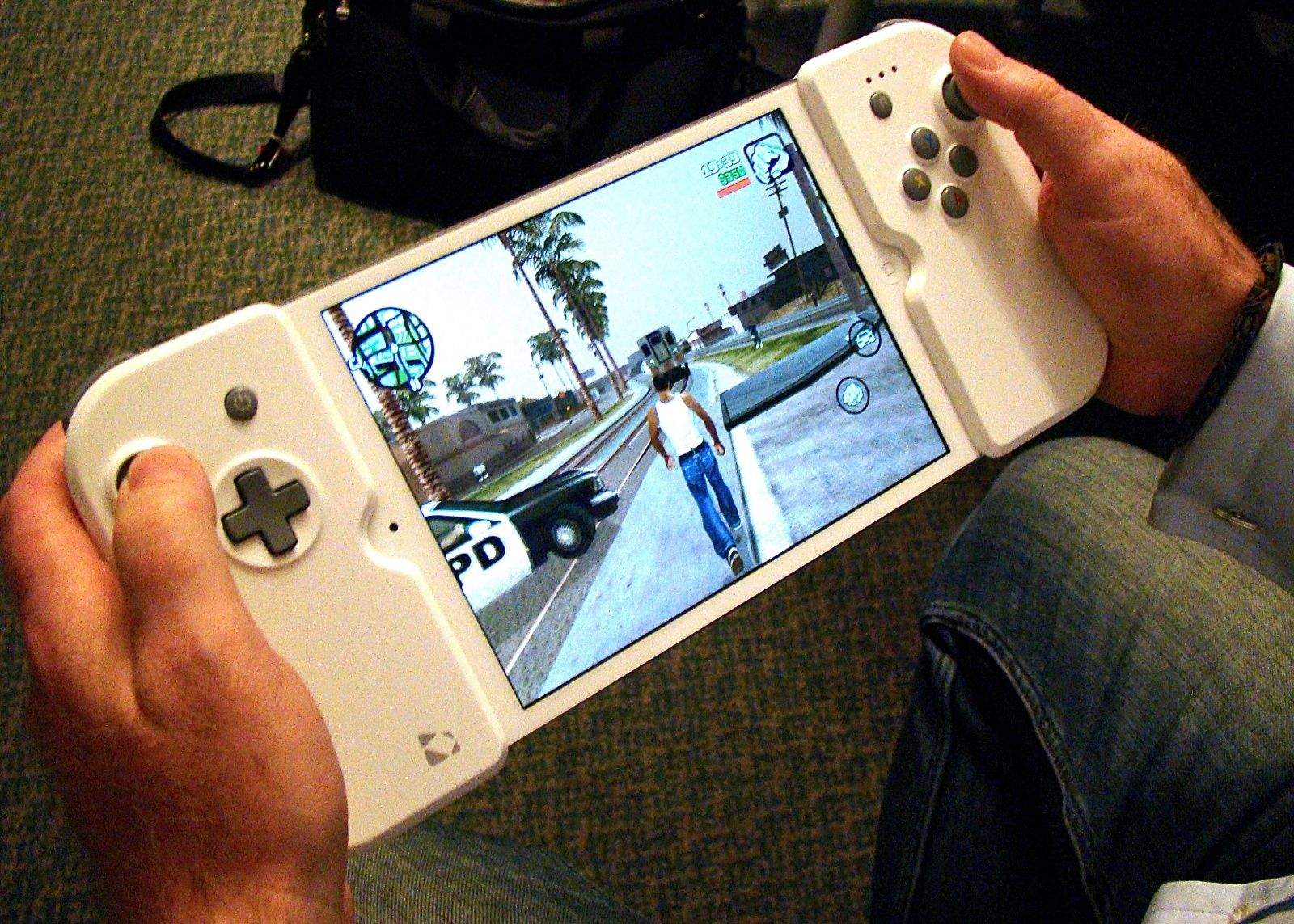As a gamer, I want a controller with buttons. I lust after this new product category like I do any new gadget that I think will improve my gaming experience. I think that if you play games with any frequency, you’ll want them too.
Unfortunately, I also think the majority of mobile gamers are making do just fine with touch interfaces, thank you very much, and that these lust-worthy devices will soon find their way to the dustbin for most who buy them. Not because the controllers, including one that straps to the sides of your iPad mini like the loving embrace of an alien face-hugger, aren’t any good. On the contrary, these are solid, high-quality gaming peripherals that will make certain types of console-like games (platformers, open-world sandbox games, first-person shooters) much easier to play.
However, since touchscreen game developers have been optimizing gameplay for buttonless control ever since the first iPhone in 2007, physical controls are less and less necessary for many of today’s (and tomorrow’s) games.
That will reduce these lovely controllers from must-have products that will go with you everywhere to a niche product only for the hard-core and retro-gaming crowds who just love being an early adopter. You know, people like me.
Apple introduced standardized game controller code into its iOS 7 operating system in June of last year. This encouraged peripheral makers to use the same layout — with a few standard variations — in any device they manufactured, letting developers focus on creating great games instead of worrying over idiosyncratic controller layouts. There are only a handful of these controllers available (from makers like Logitech, Moga and SteelSeries) right now, and they’re all pricier than their console brethren.
The latest developments in iOS 8 for gaming, including coding framework Metal and new languages like Swift, will continue to fuel the current golden era of iOS gaming, and that’s going to include physical game controllers that provide core gamers with an experience more like the ones they can get on their couch at home.
Each controller I saw last week at the Electronic Entertainment Expo — like the full-size, console-style controller from SteelSeries, the Stratus XL (that means extra-large!) — has its own form and function. Razer’s Junglecat turns your iPhone into a PSP Go, complete with a slide-out panel that hides all the gaming buttons, and the Wikipad GameVice turns your iPad mini into a premium game machine with removable side panels.
Of the three game controllers I saw this year at E3, the most unique was the Wikipad GameVice, pictured at top. This is a fascinating piece of kit, based on the company’s own Android gaming device, the Wikipad. This new iOS-flavored version allows for the placement of the Lightning port on the side of the iPad when held in gaming-centric landscape orientation, giving it a resuscitation-paddle feel.
The two halves of the white plastic buttons slide on to the left and right of your iPad mini, with a gray rubberized strap on the back to keep it all together. Once assembled, the GameVice makes your iPad look like a large-screen portable game device that anyone will envy when you whip it out on the train on the way to work.
The GameVice has dual analog sticks, plus a directional pad and four face buttons (labeled A, B, X and Y), like an Xbox or Nintendo game controller. There’s also a pair of shoulder buttons on the upper corners, a feature most console-style controllers have had since the Super Nintendo Entertainment System made them popular in the 1990s, and a left and right trigger button, common to modern controllers in the console space.
The end result is a beautiful gaming device that can easily be taken off your iPad and stowed in a backpack or bag for easy portability, but that also gives you a full-size gaming control device for longer playtimes.

The Razer Junglecat mobile gaming device offers these same controls, minus the analog sticks and the trigger buttons, in a cleverly hidden slide-out drawer integrated into a surprisingly thin iPhone case.
The Junglecat is a delightfully unique little iPhone case. Like the recently released Logitech Powershell, the Junglecat wants to cradle your iPhone at all times. Unlike the Powershell, the Junglecat is not bulky (but also lacks a battery pack to boost your gaming time on the go).
The lack of analog stick support and battery power is something I hope Razer addresses in a future hardware refresh.
Even so, when I picked up this lovely little device, which comes in white or black to match your iPhone, I immediately wanted one. It’s no more annoyingly bulky than my own iPhone wallet case, and it hides those telltale game buttons (nerd alert) behind the iPhone itself. As I held it in my hands, I thought of my favorite (yet utterly failed) handheld gaming device of yesteryear, the PSP Go, as well as Sony’s similarly doomed gaming device the Xperia Play.
As the market refused to take up the Xperia and the Go, it seems to me the Junglecat may have a long, hard road to travel to become accepted by the masses of iPhone owners. Which is truly unfortunate, because this is a great little stealth controller.

If the Junglecat is an F-117 Nighthawk, the Stratus XL is a B-52 bomber. This full-size controller is SteelSeries’ second attempt at a Bluetooth-connected iOS gaming device, and it’s got the most traditional form factor of all three devices I got to look at.
The XL is based on the company’s smaller portable controller, the Stratus, which we found to be a great little gadget with lots of potential, if a bit too small.
The controller I got to hold at E3 last week was a prototype, so the team wasn’t able to show me any gaming action, but the build of the device felt fantastic. The two analog sticks are set in the lower middle of the controller, like the PlayStation-style controllers you may have at home. I prefer this layout, though others may complain that the sticks are not offset like an Xbox controller. The weight of the controller was just right, and felt balanced in my hands. It should be powered by two AA batteries (so you won’t have to worry about charging it all the time) and connect via Bluetooth for long-term iOS gaming.
Either way, the Stratus XL comes as close to a full-size console controller as anything I’ve seen in person, and I have to say (again), I want one. To be able to play a space-exploration shooter game like Galaxy on Fire 2 with a big fat controller in my hands is too good to pass up.
But here’s the thing.
All these controllers are lust-worthy to me. I’m a gamer. I like peripherals. I think nothing of dragging a backpack full of gear and extra junk along with me on business trips just so I can have good control over the variety of games I play on lots of different gaming and iOS devices.
But most folks? Probably not. The most-played game I saw on mobile devices on my Metro trips back and forth to the E3 show floor was not Grand Theft Auto or Leo’s Fortune, both games that could benefit from a physical controller. The game I saw most was Candy Crush. This is the typical iOS gamer experience.
Razer, Wikipad and SteelSeries are going to sell quite a few of these iOS game controllers to the core audience they have made them for, and perhaps that’s enough. But as the owner of a box full of Wii remotes and older iOS gaming controllers gathering dust in the back of my closet, I’m still not convinced that even the gaming world is going to embrace these devices as essential kit.
Here’s hoping they do, though, because boy are these things fun to use.


